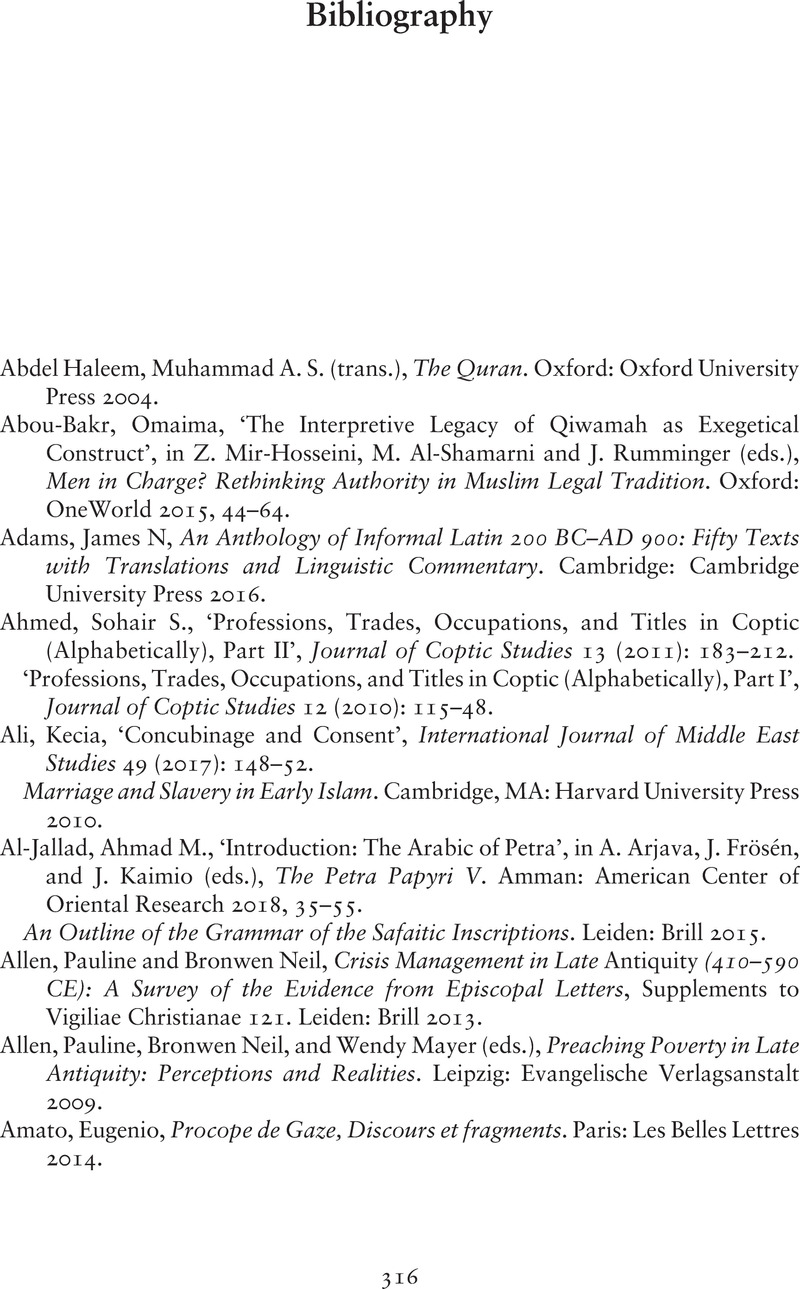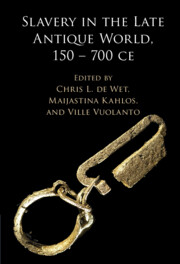Book contents
- Slavery in the Late Antique World, 150–700 CE
- Slavery in the Late Antique World, 150–700 CE
- Copyright page
- Contents
- Figures
- Tables
- Contributors
- Preface
- A Note on Abbreviations and Sources Used
- Introduction Late Antique Studies and the New Polyphony for Slave Studies
- Part I Moral and Symbolic Values of Slavery
- Part II Slavery, Cultural Discourses, and Identity
- Part III Slavery, Social History, and the Papyrological and Epigraphical Sources
- Part IV Social and Religious Histories of Slavery on the Borders of the Empire and Beyond
- Bibliography
- Index
- References
Bibliography
Published online by Cambridge University Press: 27 January 2022
- Slavery in the Late Antique World, 150–700 CE
- Slavery in the Late Antique World, 150–700 CE
- Copyright page
- Contents
- Figures
- Tables
- Contributors
- Preface
- A Note on Abbreviations and Sources Used
- Introduction Late Antique Studies and the New Polyphony for Slave Studies
- Part I Moral and Symbolic Values of Slavery
- Part II Slavery, Cultural Discourses, and Identity
- Part III Slavery, Social History, and the Papyrological and Epigraphical Sources
- Part IV Social and Religious Histories of Slavery on the Borders of the Empire and Beyond
- Bibliography
- Index
- References
Summary

- Type
- Chapter
- Information
- Slavery in the Late Antique World, 150 – 700 CE , pp. 316 - 354Publisher: Cambridge University PressPrint publication year: 2022



